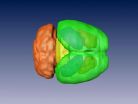(Press-News.org) Cyanobacteria belong to the Earth's oldest organisms. They are still present today in oceans and waters and even in hot springs. By producing oxygen and evolving into multicellular forms, they played a key role in the emergence of organisms that breathe oxygen. This has, now, been demonstrated by a team of scientists under the supervision and instruction of evolutionary biologists from the University of Zurich. According to their studies, cyanobacteria developed multicellularity around one billion years earlier than eukaryotes – cells with one true nucleus. At almost the same time as multicellular cyanobacteria appeared, a process of oxygenation began in the oceans and in the Earth's atmosphere.
Multicellularity as early as 2.3 billion years ago
The scientists analyzed the phylogenies of living cyanobacteria and combined their findings with data from fossil records for cyanobacteria. According to the results recorded by Bettina Schirrmeister and her colleagues, multicellular cyanobacteria emerged much earlier than previously assumed. «Multicellularity developed relatively early in the history of cyanobacteria, more than 2.3 billion years ago», Schirrmeister explains in her doctoral thesis, written at the University of Zurich.
Link between multicellularity and the Great Oxidation Event
According to the scientists, multicellularity developed shortly before the rise in levels of free oxygen in the oceans and in the atmosphere. This accumulation of free oxygen is referred to as the Great Oxidation Event, and is seen as the most significant climate event in the Earth's history. Based on their data, Schirrmeister and her doctoral supervisor Homayoun Bagheri believe that there is a link between the emergence of multicellularity and the event. According to Bagheri, multicellular life forms often have a more efficient metabolism than unicellular forms. The researchers are thus proposing the theory that the newly developed multicellularity of the cyanobacteria played a role in triggering the Great Oxidation Event.
Cyanobacteria occupied free niches
The increased production of oxygen set the Earth's original atmosphere off balance. Because oxygen was poisonous for large numbers of anaerobic organisms, many anaerobic types of bacteria were eliminated, opening up ecological 'niches'. The researchers have determined the existence of many new types of multicellular cyanobacteria subsequent to the fundamental climatic event, and are deducing that these occupied the newly developed habitats. «Morphological changes in microorganisms such as bacteria were able to impact the environment fundamentally and to an extent scarcely imaginable», concludes Schirrmeister.
INFORMATION:
Literature:
Bettina E. Schirrmeister, Jurriaan M. de Vos, Alexandre Antonelli, Homayoun C. Bagheri. Evolution of multicellularity coincided with increased diversification of cyanobacteria and the Great Oxidation Event. PNAS Early Edition. January 14, 2013. doi: 10:1072/pnas.1209927110/-/DCSupplemental
Great Oxidation Event
The Great Oxidation Event refers to a period around 2.3 billion years ago. It was no longer possible for newly created oxygen to be captured in chemical compounds. Instead, it started to accumulate as oxygen in the oceans and in the atmosphere.
Previously, in the Earth's early atmosphere, there were only traces of free oxygen. All life was based exclusively on anaerobic processes – chemical reactions that did not require oxygen. With the emergence of cyanobacteria that oxidized water with the help of light and produced oxygen as a by-product, the conditions for life on Earth gradually began to transform.
Contacts:
Dr. Bettina Schirrmeister
School of Earth Sciences
University of Bristol
Phone: +44 117 3315239
E-mail: bettina.schirrmeister@bristol.ac.uk
Dr. Homayoun Bagheri
Institute of Evolutionary Biology and Environmental Studies
University of Zurich
Phone: +41 44 635 66 23
E-mail: homayoun.bagheri@ieu.uzh.ch
Pediatric coding top tips and pediatric CPT changes 2013
2013-01-17
ELSE PRESS RELEASES FROM THIS DATE:
People with low risk for cocaine dependence have differently shaped brain to those with addiction
2013-01-17
People who take cocaine over many years without becoming addicted have a brain structure which is significantly different from those individuals who developed cocaine-dependence, researchers have discovered. New research from the University of Cambridge has found that recreational drug users who have not developed a dependence have an abnormally large frontal lobe, the section of the brain implicated in self-control. Their research was published in the journal Biological Psychiatry.
For the study, led by Dr Karen Ersche, individuals who use cocaine on a regular basis underwent ...
Cheating to create the perfect simulation
2013-01-17
(Jena) The planet Earth will die – if not before, then when the Sun collapses. This is going to happen in approximately seven billion years. In the universe however the death of suns and planets is an everyday occurance and our solar system partly consists of their remnants.
The end of stars – suns – rich in mass is often a neutron star. These "stars' liches" demonstrate a high density, in which atoms are extremely compressed. Such neutron stars are no bigger than a small town, but heavier than our sun, as physicist PD Dr. Axel Maas of the Jena University (Germany) points ...
Dietary shifts driving up phosphorus use
2013-01-17
Dietary changes since the early 1960s have fueled a sharp increase in the amount of mined phosphorus used to produce the food consumed by the average person over the course of a year, according to a new study led by researchers at McGill University.
Between 1961 and 2007, rising meat consumption and total calorie intake underpinned a 38% increase in the world's per capita "phosphorus footprint," the researchers conclude in a paper published online in Environmental Research Letters.
The findings underscore a significant challenge to efforts to sustainably manage the ...
Viagra converts fat cells
2013-01-17
Researchers from the University of Bonn treated mice with Viagra and made an amazing discovery: The drug converts undesirable white fat cells and could thus potentially melt the unwelcome "spare tire" around the midriff. In addition, the substance also decreases the risk of other complications caused by obesity. The results are now published in "The Journal of the Federation of American Societies for Experimental Biology" (FASEB).
Sildenafil – better known as Viagra – is used to treat erectile dysfunction. This substance prevents degradation of cyclic guanosine mono-phosphate ...
Is athleticism linked to brain size?
2013-01-17
VIDEO:
This movie shows running mice (bred-for-athleticism mouse on the left, regular mouse on the right).
Click here for more information.
RIVERSIDE, Calif. — Is athleticism linked to brain size? To find out, researchers at the University of California, Riverside performed laboratory experiments on house mice and found that mice that have been bred for dozens of generations to be more exercise-loving have larger midbrains than those that have not been selectively bred ...
Fighting sleep: UGA discovery may lead to new treatments for deadly sleeping sickness
2013-01-17
Athens, Ga. – While its common name may make it sound almost whimsical, sleeping sickness, or African trypanosomiasis, is in reality a potentially fatal parasitic infection that has ravaged populations in sub-Saharan Africa for decades, and it continues to infect thousands of people every year.
Few drugs have been developed to treat sleeping sickness since the 1940s, and those still in use are highly toxic, sometimes causing painful side effects and even death. But researchers at the University of Georgia have made a discovery that may soon lead to new therapies for this ...
Critically ill flu patients saved with artificial lung technology treatment
2013-01-17
TORONTO (January 17, 2013 ) - In recent weeks the intensive critical care units at University Health Network's Toronto General Hospital have used Extra Corporeal Lung Support (ECLS) to support five influenza (flu) patients in their recovery from severe respiratory problems.
ECLS systems are normally used at the hospital as a bridge to lung transplantation but increasingly, the hospital is using ECLS on patients where the usual breathing machines (ventilators) cannot support the patient whose lungs need time to rest and heal.
The ECLS systems are essentially artificial ...
Drug abuse impairs sexual performance in men even after rehabilitation
2013-01-17
Researchers at the University of Granada, Spain, and Santo Tomas University in Colombia have found that drug abuse negatively affects sexual performance in men even after years of abstinence. This finding contradicts other studies reporting that men spontaneously recovered their normal sexual performance at three weeks after quitting substance abuse.
The results of this study have been published in the prestigious Journal of Sexual Medicine, the official journal of the International Society for Sexual Medicine. The authors of this paper are Pablo Vallejo Medina –a professor ...
Trading wetlands no longer a deal with the devil
2013-01-17
URBANA – If Faust had been in the business of trading wetlands rather than selling his soul, the devil might be portrayed by the current guidelines for wetland restoration. Research from the University of Illinois recommends a new framework that could make Faustian bargains over wetland restoration sites result in more environmentally positive outcomes.
U of I ecologist Jeffrey Matthews explained that under the current policies if a wetland is scheduled for development and a negative impact is unavoidable, the next option is to offset, or compensate, for the destruction ...
UNC researchers use luminescent mice to track cancer and aging in real-time
2013-01-17
Chapel Hill, NC – In a study published in the January 18 issue of Cell, researchers from the University of North Carolina Lineberger Comprehensive Cancer Center have developed a new method to visualize aging and tumor growth in mice using a gene closely linked to these processes.
Researchers have long known that the gene, p16INK4a (p16), plays a role in aging and cancer suppression by activating an important tumor defense mechanism called 'cellular senescence'. The UNC team led by Norman Sharpless, MD, Wellcome Distinguished Professor of Cancer Research and Deputy Cancer ...




